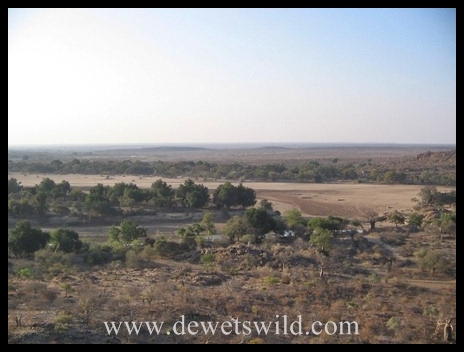
In the far north-west corner of South Africa’s Limpopo Province, on the border with Botswana and Zimbabwe, is a national park that protects not only a rich and diverse natural landscape, but also a fascinating cultural heritage.

Mapungubwe National Park was officially proclaimed only in 1995 (originally called Vhembe-Dongola National Park) and was conferred World Heritage Site status in 2003, but the area’s rich history dates back much further than that. Atop the inconspicuous Mapungubwe Hill, archaeologists have uncovered evidence of a thriving and advanced African civilisation, dating back to between 900 and 1250AD, trading with countries as far away as Egypt, India and China. This rich cultural heritage is today showcased in an award-winning interpretive centre and guided tours are presented to the archaeological site on and around Mapungubwe Hill.



The Park however has much more to offer nature enthusiasts though. The Park is home to large predators like lion, leopard and spotted hyena, a large number of elephants, many antelope species, zebra and giraffe, a huge variety of birds, reptiles and invertebrates, and interesting plant life – not least of which is the impressive baobabs.






From a cliff-top viewpoint there are magnificent views over the confluence of the Limpopo and Shashe rivers where South Africa, Botswana and Zimbabwe meets, with a well laid-out picnic site nearby.



In the same general vicinity a unique raised walkway – high enough for elephants to walk underneath with ease and almost a kilometre in length – leads through the riverine vegetation on the banks of the Limpopo. Here the fever trees, with their yellow trunks, are particularly beautiful – a notice board at the start of the trail calls into memory a quote from one of Rudyard Kipling’s’ Just So Stories, The Elephant’s Child: “…till at last he came to the banks of the great grey-green, greasy Limpopo River, all set about with fever-trees…”.



The Maloutswa Hide, in the western section of the Park, is another highlight not to be missed. Here, in a shaded, spacious wooden building overlooking a large pan one can easily while away hours watching the animals and birds come and go to slake their thirst at the water’s edge.


SANParks offer overnight accommodation in four camps (Leokwe Rest Camp, Limpopo Forest Tented Camp, Tshugulu Lodge and Vhembe Wilderness Camp) and camping at the Mazhou Campsite, and a variety of guided activities are also on offer.


Today grand plans are being implemented to establish a unified trans frontier conservation area centred on Mapungubwe by incorporating state and private land from the three neighbouring countries – a praise-worthy initiative well worth supporting.



Wow! this is such a great read. We had traveled to the park about a year ago, and it was nothing short of amazing. We stayed over at Mopane Bush Lodge, and the itinerary included a visit to the national park and honestly, we weren’t disappointed at all.
LikeLike
Thank you for spending some time with one of our older posts, Himanshu. It really is high time that we return to Mapungubwe, and hopefully that might happen in 2019. Thanks as well for the useful information about the accommodation available outside the Park – being partial to self-catering and camping we prefer to stay inside the Parks we visit (not to mention those extra minutes that could be spent exploring rather than checking in and out at the gate) but we understand this isn’t everyone’s cup of tea.
LikeLike
Pingback: Severe flooding strikes two of our National Parks « de Wets Wild
These are absolutely beautiful and portray Africa wonderfully. So glad you are sharing all this beauty with everyone. I just love that sunset, the baobab trees – actually I love it all. 😉
LikeLike
Again we can only thank you deeply for your support! It’s great to know that there’s someone out there that shares our passion!
LikeLike
Pingback: Mapungubwe National Park | Home Far Away From Home
WONDERFUL PHOTOS!
BE ENCOURAGED! BE BLESSED!
LikeLike
Thank you kindly!
LikeLike